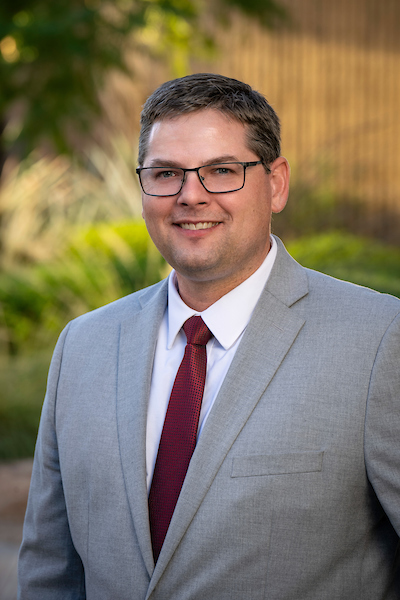Designing Large Custom Sewer Structures
Key considerations for improving wastewater system design.
Written by: Crystal Faucett and Keith Faucett, PE
Designing sewer infrastructure is an everyday task for the engineers in Dibble’s Utilities group. With over 60 years of engineering expertise, we know that every design requires precision, and this is especially so for larger sewer structures. When sewer junctions require a manhole larger than 5 feet in diameter, they are generally more complicated and expensive to construct, so precision and efficiency are crucial.
Dibble specializes in these custom sewer structures and has recently designed them for clients including Pima County Wastewater Reclamation, the City of Tempe, the Town of Queen Creek, and EPCOR. Through our diverse project experience, we have gained valuable knowledge and have identified three key considerations for designing large custom sewer structures:
- Constructability
- Materials and manufacture
- Maintaining the energy gradient
The following discussion expounds these considerations and how they apply to effective sewer system design.
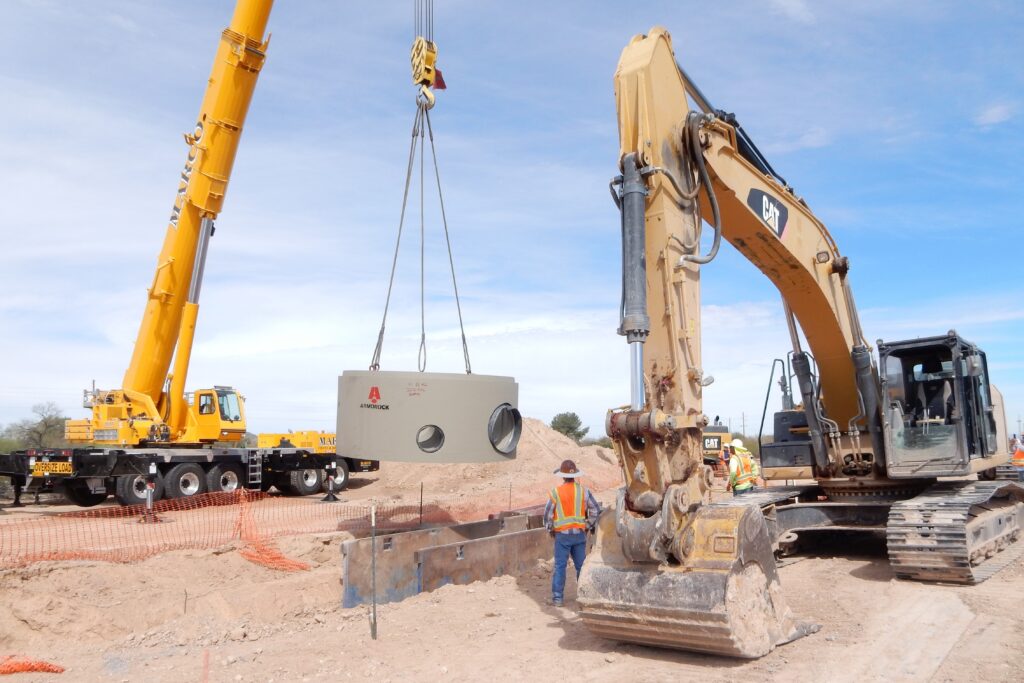
Constructability
Throughout the design process, our engineers ask, is it constructable? Keith Faucett, Vice President in our Utilities group, describes it this way:
“If I were to build the structure or work inside it, how much space would I need? What obstructions or hazards are there? What questions would I have? That’s part of what constructability is—thinking about the real-world application.”
Designing with constructability in mind improves project efficiency. Some aspects of constructability are more visible than others. For example, nearby power lines, drainageways, busy roads, or underground utilities can affect project timing and limit the available work area. This, in turn, can affect whether the sewer structure design can feasibly be installed.
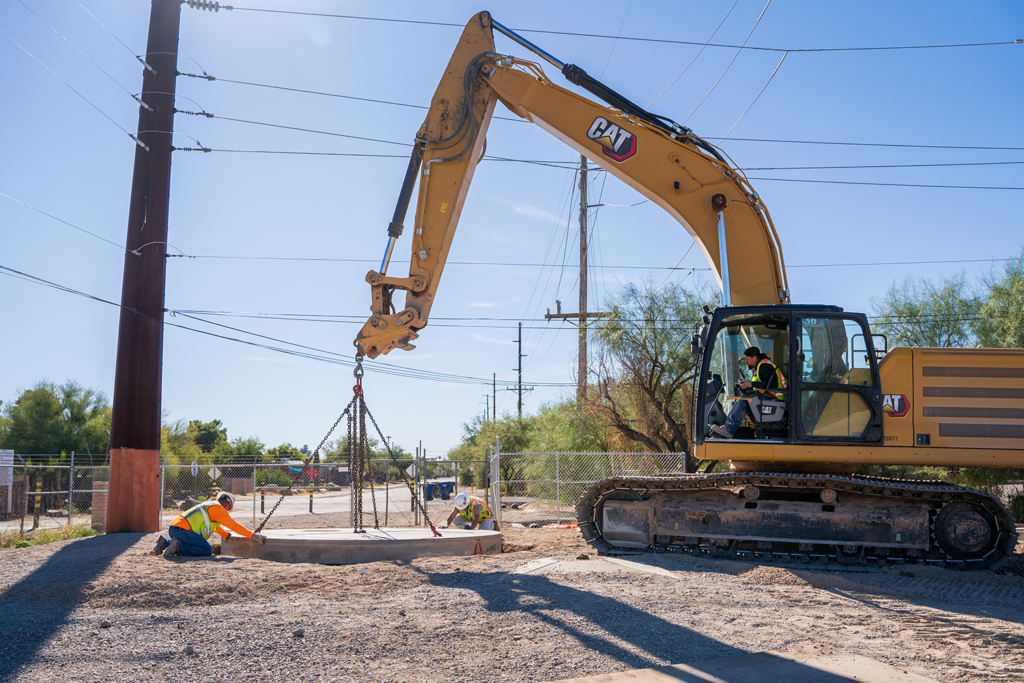
Another aspect of constructability is flow management—determining what to do with the existing wastewater flow while the new structure is installed. Larger sewer structures typically involve larger pipe sizes and higher flow rates, which can make flow management more complicated. For example, bypass pumping for large amounts of wastewater can cost tens of thousands of dollars per day and require significant amounts of bypass piping and space for pumps and other equipment. This can affect the feasibility of the design and needs to be considered early on. For our recent Northwest Outfall Siphon Rehabilitation project, the team constructed a 270-foot temporary bridge to carry wastewater bypass piping over the Santa Cruz River while new siphon inlet and outlet structures were installed—a major undertaking.
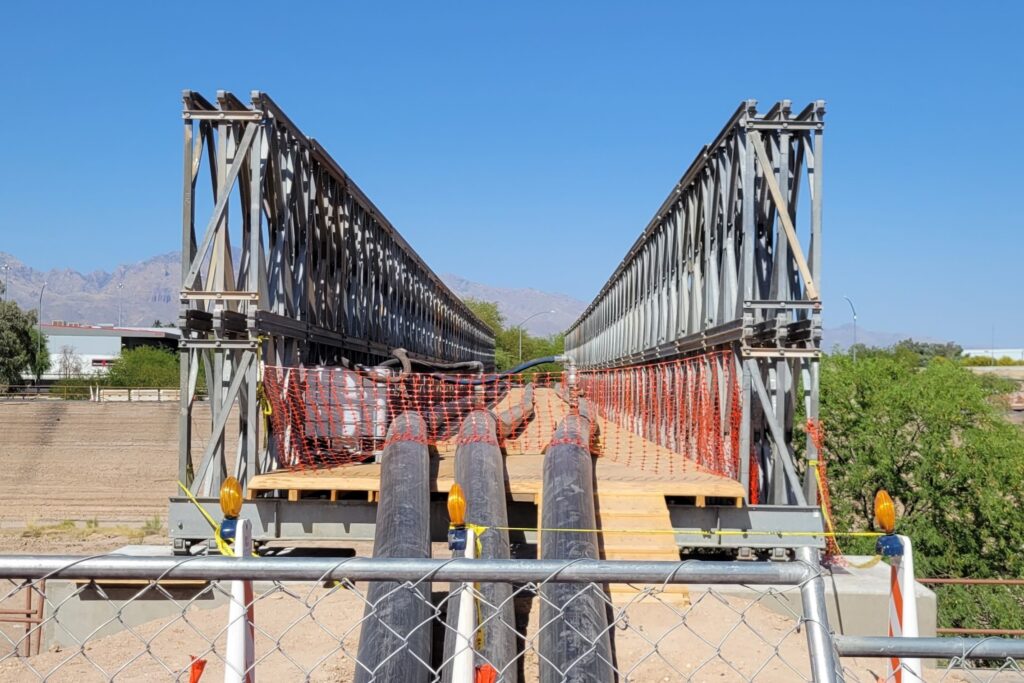
Connection methods are another important consideration. For precast sewer structures, the existing sewer often needs to be cut and connected to the new structure using a coupling or an adapter. To make the connection possible within existing constraints, it is especially important to verify the alignment and elevation of the existing sewer. The engineer also needs to confirm the availability of suitable couplings or adapters for the connection. Many couplings are typically available for pipes less than 24 inches in diameter, but as the pipe diameter increases, the available connection options can decrease. This was the case for the Tucson Boulevard Diversion Structure project, where a suitable large-diameter coupling was unavailable. To address the issue, the team developed a custom fiber-reinforced polymer (FRP) internal joint to connect the new structure to the existing 54-inch pipe.
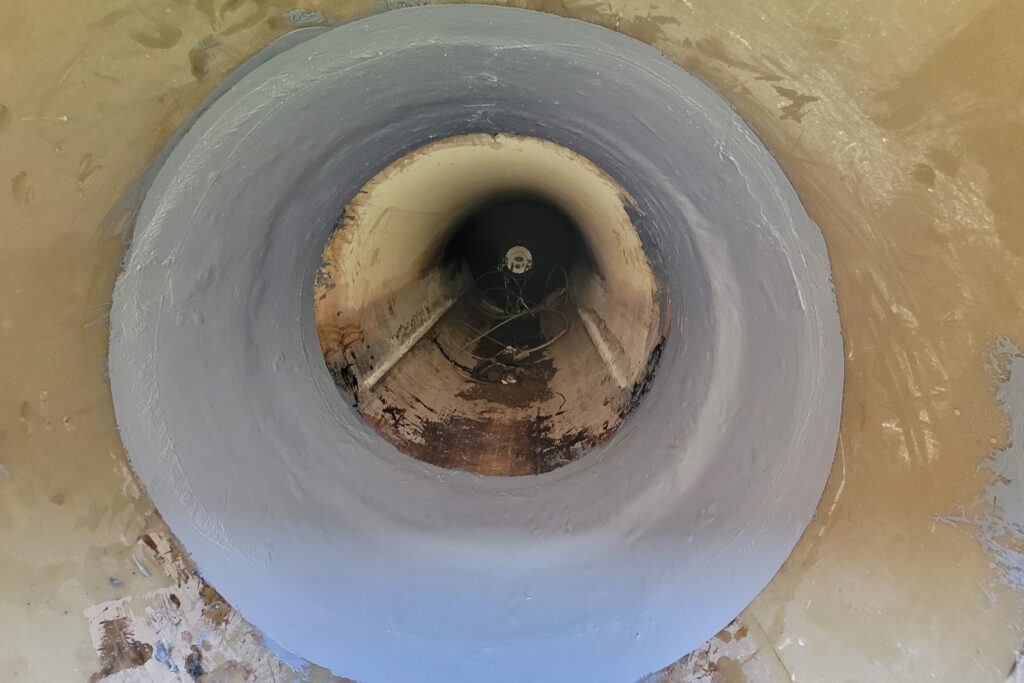
Materials and Manufacture
When it comes to materials and manufacture for large custom sewer structures, engineers generally have three options: precast polymer concrete, precast concrete with lining, or cast-in-place concrete with lining. Each of these options could be appropriate depending on availability and project needs.
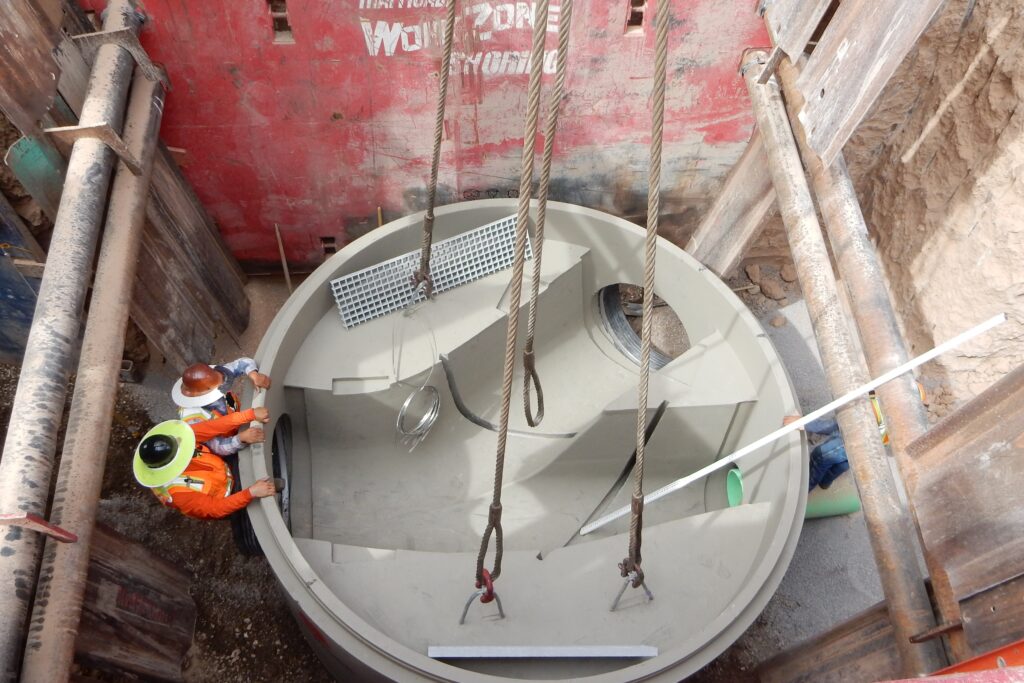
Precast structures can reduce installation time because they are already cured and ready to place. This could reduce the duration of bypass pumping or help avoid weather delays. Some precast structures, such as precast polymer concrete, are more resistant to corrosion, which increases their service life. However, connecting precast structures to the existing sewer can be more complicated than cast-in-place. Precast structures must also be transported to the job site either intact or in large pieces, which can be a challenge for some projects due to site access conditions.
Cast-in-place concrete structures, on the other hand, are formed and placed on site, and the finished concrete is typically coated to protect it from corrosion. This option often provides more flexibility for connecting to the existing sewer. As with precast structures, the engineer needs to consider how the materials will get to the project site. This applies especially to the concrete, which requires access for concrete trucks and space for staging. Cast-in-place concrete structures also require time to cure, which can increase installation time.
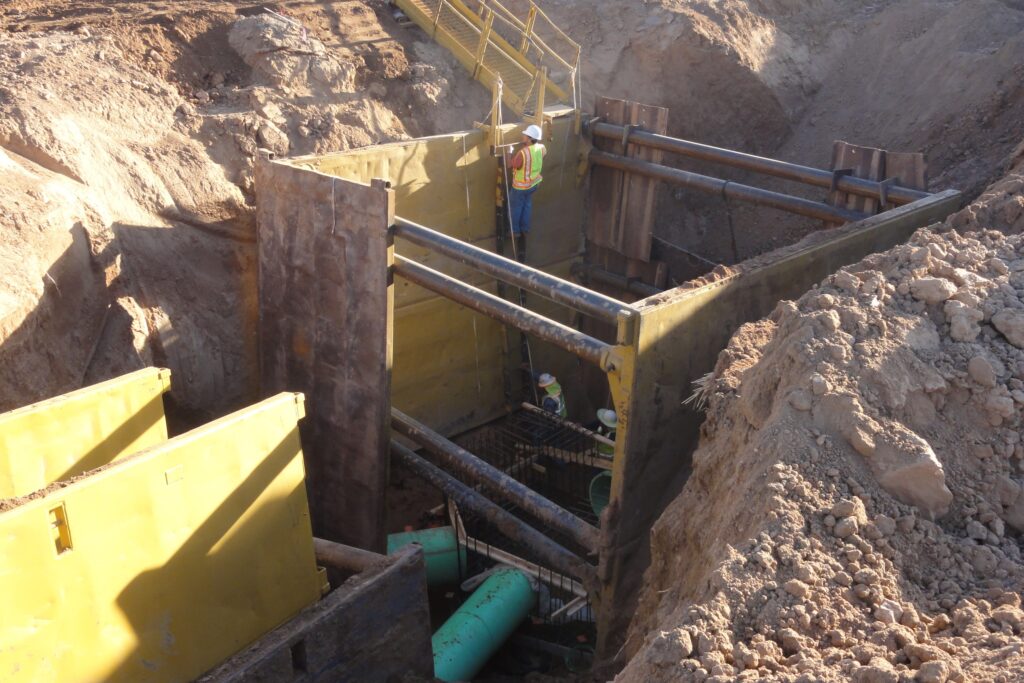
Whether the structure is precast or cast-in-place, effective communication is essential for ensuring the finished structure fits the client’s needs and expectations. Dibble has found that 3D modeling custom sewer structures optimizes communication with manufacturers, contractors, and clients. It also helps ensure the structure is constructable.
Maintaining the Energy Gradient
For gravity sewer structures, maintaining the energy gradient through the structure is key because it minimizes turbulence, corrosion, and backwater. This helps to ensure that the structure will function as intended throughout its design life. Typically, we can maintain the energy gradient through gravity sewer structures (such as manholes) by providing a 0.1-foot to a 0.2-foot invert drop through the structure. Larger structures, however, may require more than the typical drop to overcome head loss in the structure.
Appropriate invert drop can be confirmed by calculating the total head loss in the structure and comparing it to the available elevation difference (head). Large structures can have several sources of head loss, such as from bends, expansions, and contractions in flow; these all contribute to the total head loss in the structure. When head loss does not exceed available head in a structure, the energy gradient is maintained—allowing wastewater to flow smoothly through the structure.
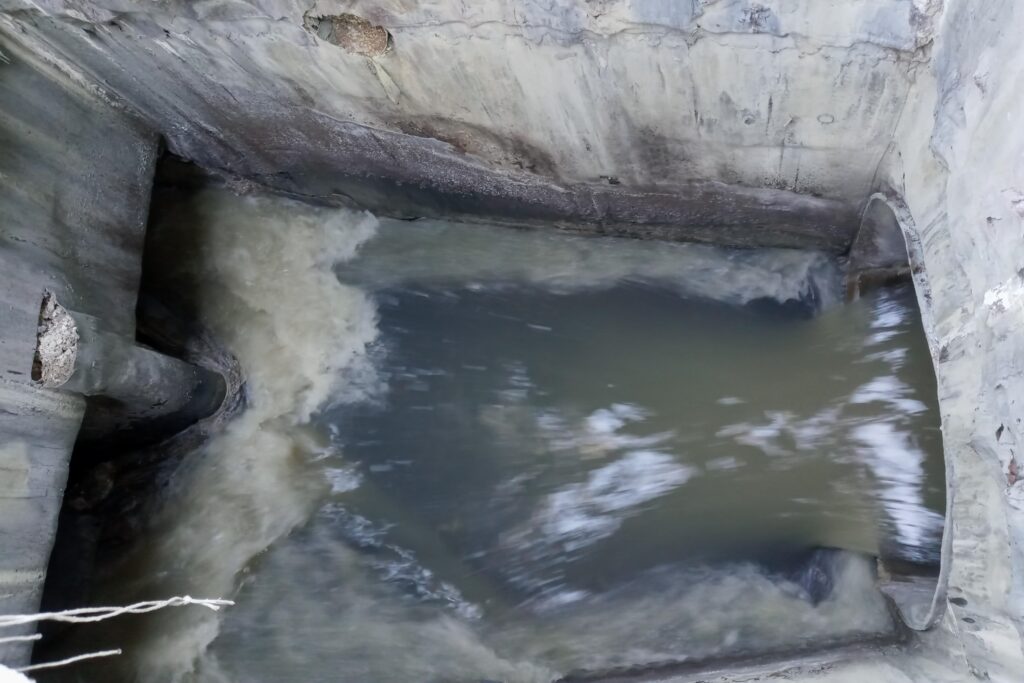
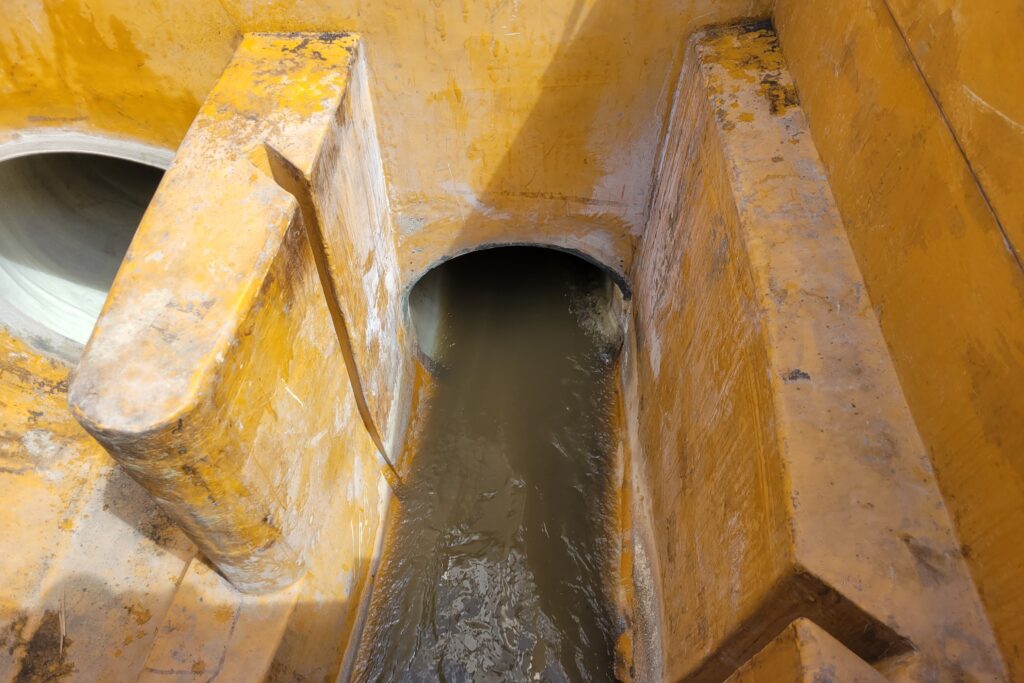
Keeping the Big Picture in Mind
Constructability, materials and manufacture, and maintaining the energy gradient are some of the key considerations for designing large custom sewer structures. Dibble understands that large sewer infrastructure affects the community in big ways. That is why we strive to keep the big picture in mind for every project—why the new structure is needed; who is going to build, operate, and maintain it; and how it can be feasibly implemented. This has helped us to continually improve our process and consistently deliver quality projects.
Markets Mentioned
Water
Services Mentioned
Infrastructure Rehabilitation, Water + Wastewater
This Case Study PDF

